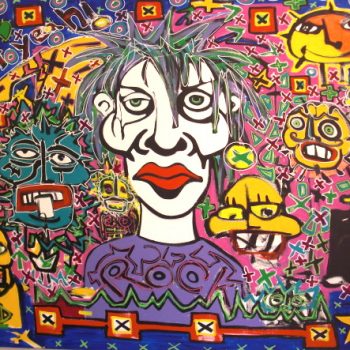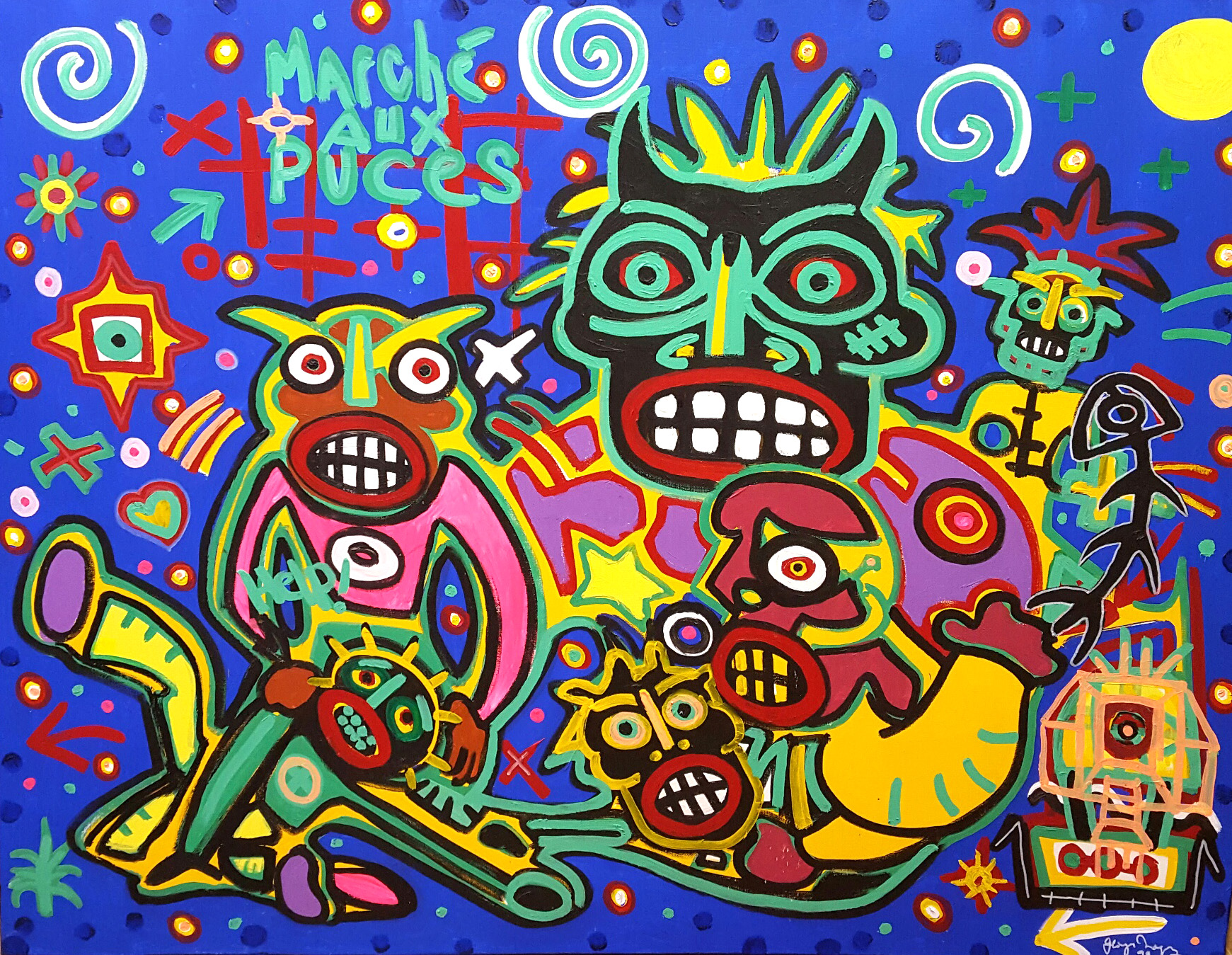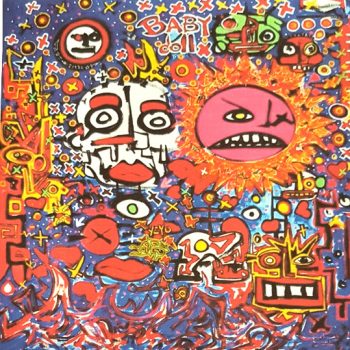
MOQUAY
INFO
MOQUAY
BIOGRAPHY
GEORGES MOQUAY
“The Pigments of Life”
Born in France in 1970, Georges Moquay is a French painter. He is the son of Daniel Moquay and his wife Rotraut Klein-Moquay, widow, since 1962, of Yves Klein.
Course
Until 1982, Georges Moquay lives with his family between France and Spain (Ibiza). Before leaving with his family for Arizona (United States). After his national service in 1991 as an interpreter in the French Navy aboard L’Orage, he returned to Arizona to study photography and the history of art at the University. Since 1995, he has exhibited in many places and galleries in Arizona, France, Spain, Australia …
He lives and works in Paris, multiplying the artistic and visual experiences around the painting, the music, the. Video He shot in the film of Richard Bohringer “It is beautiful a city at night”.
Born in a family where art in all its forms is the master word, a painter of color and expressive explosions, influenced by pop, rock, reggae music, by the signs of modern graphic: tags, grafs, comics …; The references to ethnic communities, Georges Moquay is an artist, fully one can situate in the line of Jean-Michel Basquiat, Robert Combas, etc …
In a paved courtyard of the XIth arrondissement of Paris, a door with two leaves opens on the workshop of Georges. Hangar converted into loft, with original brick floor and high perched frame: a magnificent volume on the scale of its large sizes.
From the start, the tone is given with his character, “the wigger” (a contraction of white nigger) that repeats itself on the walls. One is at the African time and Georges, little white, makes drawings of colors. “The wigger is my Buddha, my Easter Island, my totem,” he declares before explaining that he came this way, at a stroke, thinking of the candy dispenser whose head Rose to let out a small rectangle pastel and sweet. Ah! Childhood !
Then Georges reflected. He told himself that his character as a black man with a white face had to do with the celebrations of the death where Mexican and African are grime in white to make heads of skeletons. And as “nothing is more alive than being close to death,” he then noticed that the luscious lips of his “wigger” resembled the body of a woman lying on a sofa.
In the bric-a-brac of the workshop, where the smell of coffee mingles with that of the essence of turpentine, behind the pots of pigments which he calls his spices, there are rolled canvases. They are immense, painted all-over, with faces-masks, teeth, crosses, hearts, superimpositions of burlesque characters. They are teeming with life and color. From the hip hop culture, from rap, from M.T.V, they have a dadaist side version B.D, pop art on a background of graffiti. “I want my paintings to make me want to dance”. Monaco was not mistaken, choosing as a cover for his invitation card for the Bal de la Rose 2006 (for the benefit of the Princess Grace Foundation of Monaco) a painting by Georges.
He was born in painting, a way of saying that he belongs to a family of artists. Let’s start with the star of contemporary art, Yves Klein, first husband of his mother. “He did not choose the worst color! ”
I am lucky to have been blessed by this blue. A fairly royal blessing since my mother was sacred “Queen of Blue” at her wedding. Speaking of his mother, Rotraut, sister of the sculptor Gunther Uecker, icon of the German scene, herself a painter-sculptor of mystical galaxies, flights of hearts and imaginary animals. “My mother and I use the same colors, the same weapons. There are correspondences between our work. It’s like a sequel, a harmony, a balance. ”
Remains the central figure of her childhood, Marie Raymond, mother of Yves Klein, sort of third grandmother for Georges, baptized “Mimaman”. “She dressed like a parrot. She was funny, cheerful, kind. I saw her painting with all her colors. I think it’s her that I most resemble. ” Difficult to be oneself when one has such a kinship, when the friends of the family are called Pierre Restany, the New Realistic Pope, Arman, Caesar or Niki de Saint-Phalle. As far as he can remember, George painted. Painted because his toy box was full of tubes and brushes, painted because he had the right, with his brother David, to daub the walls of his room, painted because Rotraut asked his sons to sand, with Sandpaper, the overflow of material of his paintings.
“My only landmark is painting,” said the one who was broughtuebalé from Paris to Ibiza, from Goussonville in Arizona, and wanted a “real job”, far from the family heritage. He held a coffee shop in Phoenix, then after a school in Switzerland, tried photography. Only then: “When I close my eyes, I paint.” One does not escape its destiny. At 24, he has his first workshop, named “Paris-Phoenix” in tribute to the “Paris-Texas” of Wim Wenders, in the university district of Tempe. “We shared it at six. We were playing at the little factory. ” Georges Moquay is an artist of his time. He has included in his work, references to television and a certain derision. It decompartmentalises the disciplines, making the painting in the morning, the photo or the video in the afternoon, a performance in the evening. His “portraits-photos”, mix two mediums, since it is a painting after Polaroid. Looks like landscapes. These are profiles. He sees masks there. And when he does not paint, Georges makes music, drums, and plays the masters of ceremony with the name of war “G White”. […] Join the dance !





